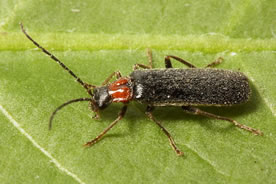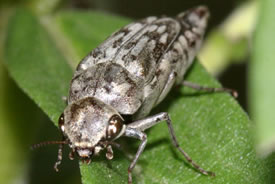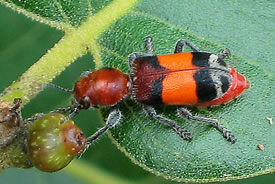Beetles: Nature's mess and soil pollinators

Soldier beetle (Photo © Stephen Luk)
Pollinators are extremely important. Not only are they responsible for one out of every three bites of food we eat, but they are vital in creating and maintaining the habitats and ecosystems on which many animals rely for food and shelter.
Beetles are one such pollinator. Of the world’s almost 350,000 flowering plants, it is thought that beetles are responsible for pollinating close to 90 percent of them. However, most beetles that visit flowers are not there for the nectar. Instead, they often chew their way through flowers and some species tend to leave their droppings behind, earning them the name “mess and soil” pollinators.
Very few plants are primarily pollinated by beetles. Those that are dependent on beetles are called cantharophilous plants. They are often fragrant and give off a spicy scent that attracts beetle pollinators. Beetles typically visit bowl-shaped flowers that are white or green, such as magnolias, smell strongly of fruit and have lots of pollen.
It is thought that beetles were among the first insects to visit flowers. In fact, fossil records show that beetles started visiting flowers 200 million years ago (during the Mesozoic period), roughly 50 million years before bees. Today’s beetles seem to prefer pollinating the close descendents of ancient flowers, such as magnolias, water lilies and spicebush.

Tumbling flower beetle (Photo by Tom Murray)
Beetles thought to pollinate flowering plants include (but are not limited to):
- Members of the tumbling flower beetle family, of which 56 species are native to Canada. Tumbling flower beetles are commonly found on umbelliferous plants — plants on which the flowers arise from the same point on the main stem and culminate in a cluster with the youngest flowers at the centre, forming a flat-topped head.
- Members of the soldier beetle family, several species of which are native to Ontario. These beetles are related to the lightning bug family (fireflies) but produce no light. They are easily attracted by single-flowered marigolds and members of the daisy family. Goldenrods are soldier beetle magnets, as are many native shrubs and trees.
- Members of the checkered beetle family, native species of which are found across Canada. Adults of this species feed on pollen from plants like sunflowers.

Checkered beetle (Photo by Lynette)
Have you voted for your favourite native pollinator yet? If not, click here to cast your vote and sign up to receive access to a free Father’s Day e-card featuring the winning pollinator!


